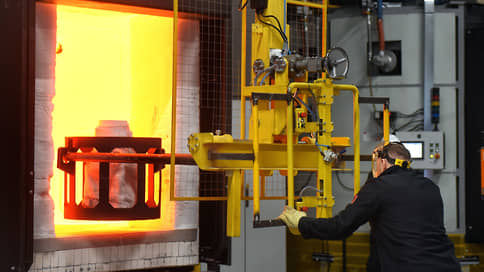Demand encourages enterprises to expand production capabilities
[ad_1]

The high level of demand stimulated Russian companies to increase the efficiency of using existing capacities and introduce new ones, the Central Bank notes in its March report on the regional economy. The growth in demand is also due to restrictions on imports and the withdrawal of some foreign manufacturers from the market against the backdrop of growing government needs. This allowed sanctioned and export-oriented industries to increase capacity utilization by shifting part of their supplies to the domestic market. Further expansion of output is limited by a shortage of personnel, imported components and reduced access to technology, the Central Bank records.
At the end of 2023, the Bank of Russia recorded record capacity utilization against the backdrop of rapid growth in company profits and their reserves. The regulator also noted rising labor costs and growing optimistic expectations of demand. All this is likely to support investment and GDP growth in 2024, the regulator suggested.
The Central Bank’s report on the regional economy notes that last year, faced with increased demand, enterprises in real terms invested 9.8% more in expansion and renewal of production (in fixed capital) than in 2022, and by 17. 2% – than in 2021 (see “Kommersant” on March 13). Central Bank surveys show that the share of companies that increased capacity in 2023 exceeds the share that reduced them (36 and 9%, respectively). This is typical for most industries, construction and agriculture.
The increase in capacity utilization was helped by growing demand, including those associated with import restrictions and the withdrawal of a number of foreign companies from the market. This allowed the enterprises that were subject to sanctions to increase their capacity and reorient themselves to the domestic market. Demand was supported and stimulated by the state (the recipients of benefits are primarily the shipbuilding enterprises of the Far East, aircraft and instrument-making plants of the Siberian macroregion, and builders in all regions). Not only domestic but also external demand for agricultural products grew. The Central Bank notes that in the field of mining, foreign trade restrictions have a limited impact on the level of capacity utilization; in general, the level of capacity utilization there remained high in 2023 (in the fourth quarter – 83% versus 78% on average for 2013–2023).
Difficulties with the supply of imported components and problems in the labor market limited the possibilities of using existing capacities, the regulator notes, although the share of domestic and Asian manufacturers in the equipment purchased by enterprises has increased. “In some cases, replacement of equipment and component suppliers ensured continuity of the production process, but a number of difficulties remained,” the report emphasizes. For example, interviewed specialists from coal mines in Siberia noted that alternative equipment does not always meet the needs of the enterprise. A plant producing components for motor vehicles in the Urals reported that the forced transition to spare parts from other manufacturers led to a decrease in product quality.
Companies’ expectations for 2024 indicate that the optimization of business processes and the launch of new equipment should contribute to increased labor productivity and partially solve the problem of personnel shortages (see chart). One of the areas of capacity modernization is automation and robotization of production lines.
But the ability of enterprises to modernize and launch new production is “somewhat limited” by difficulties with the supply of imported equipment, the Central Bank points out. Thus, in Central Russia, the launch of a plant for the production of non-woven fiberglass has been postponed from 2023 to 2026 due to a ban on the supply of some European equipment. In the Urals, a reinforced concrete plant stopped modernizing using European technology due to the failure of a deal for an ordered set of automated conveyor lines. In these conditions, the expansion of production capabilities will be facilitated not only by the acquisition of new equipment and the modernization of existing ones, but also by the reactivation of old capacities, the Central Bank concludes.
[ad_2]
Source link






